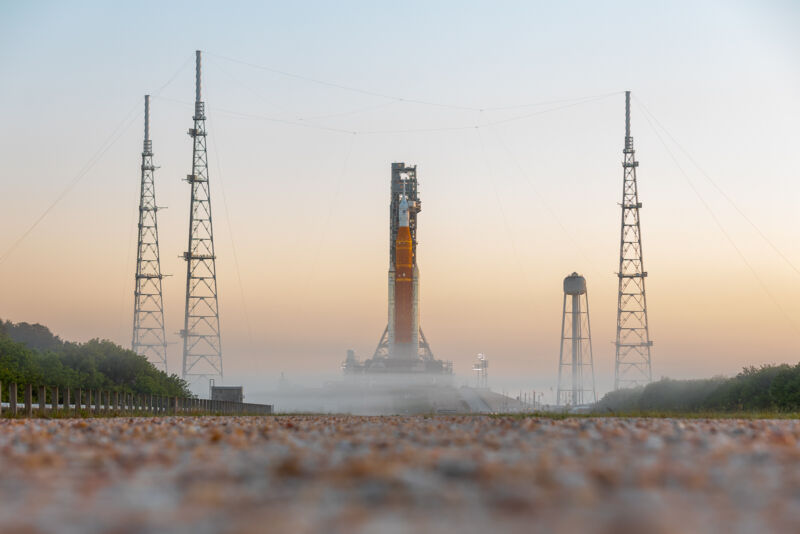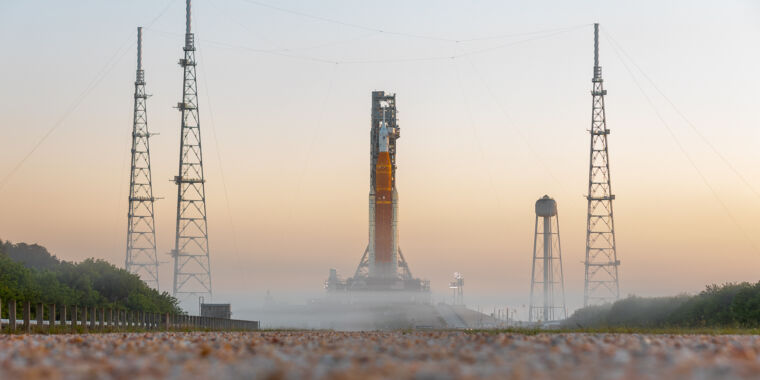
Trevor Mahlmann
On a chilly night in early December 2017, I met a couple of industry sources at a southeast Houston restaurant called Nobi. Located just down the road from Johnson Space Center, Nobi serves Vietnamese cuisine and has an amazing range of beers on tap. We partook.
These space industry figures are not well known outside the business, but they are very informed and shrewd observers of spaceflight. And perhaps most importantly to me as a reporter, they were particularly candid in this setting.
They were in town for a space conference, so we gossiped and chatted and talked shop. Deep into our cups, speculation turned toward NASA’s Space Launch System rocket. When, I asked, do you really think the big rocket will launch?
One of these sources responded with a surprising prediction. “Probably around 2023,” he said.
At the time, NASA was planning a 2019 launch date for the rocket, just two years hence. The hardware was nearly completed. So a prediction of six years of work remaining seemed pretty out of left field. But I was mildly drunk, and what’s Twitter for if not a little kibbitzing? So I grabbed my phone and tweeted his prediction:
An unbiased industry source spitballed tonight that the first SLS launch will probably come around 2023.
— Eric Berger (@SciGuySpace) December 5, 2017
The prediction did not garner all that much attention at the time, and it was largely dismissed as a bad joke. But as the years have gone by, in certain small corners of the web, this tweet has become something of an Internet legend, a wild prediction that might come true.
It has also spurred anger from supporters of the large NASA rocket. In 2020, the r/SpaceLaunchSystem subreddit discovered the tweet, and some readers were downright angry. User “insane_gravy” wrote, “Eric Berger once again proves that anyone can be a space ‘journalist’ because there are no standards.” Well, I hope insane_gravy really likes gravy because the Space Launch System rocket and its Artemis I mission are now scheduled to launch on Wednesday, just eight days before Thanksgiving.
However improbably, the source has been proven to be correct. Given that we are less than two months from the new year, it is already “around” 2023. Moreover, fiscal year 2023 began five weeks ago.
A second prediction
Three years later, in October 2020, this same source made another pronouncement wild enough that I decided to again tweet about it. The prediction concerned NASA’s forthcoming decision on a contractor to build a “Human Landing System” to take its astronauts down to the Moon as part of the Artemis Program.
At the time, SpaceX, a Blue Origin-led “National Team,” and a third bidder led by Dynetics were competing for one or two NASA contracts. The conventional thinking in the space industry was that Blue Origin would win the primary contract since it led a team of new and traditional aerospace companies and proposed a design tailored to NASA’s specifications. It was thought that maybe Dynetics or SpaceX would get a secondary contract.
Far from proposing a conventional lunar lander, SpaceX wanted to use its massive Starship vehicle as a lunar lander. This option was somewhat discounted by the space industry because Starship was an experimental, risky approach. There were also concerns that if NASA selected SpaceX, it would put Starship on the critical path for the Artemis Moon Program. This meant that for the Artemis Program to succeed, Starship had to work. And if Starship worked, it would mean that NASA had funded a rocket that was better than its own expendable and costly Space Launch System rocket.








